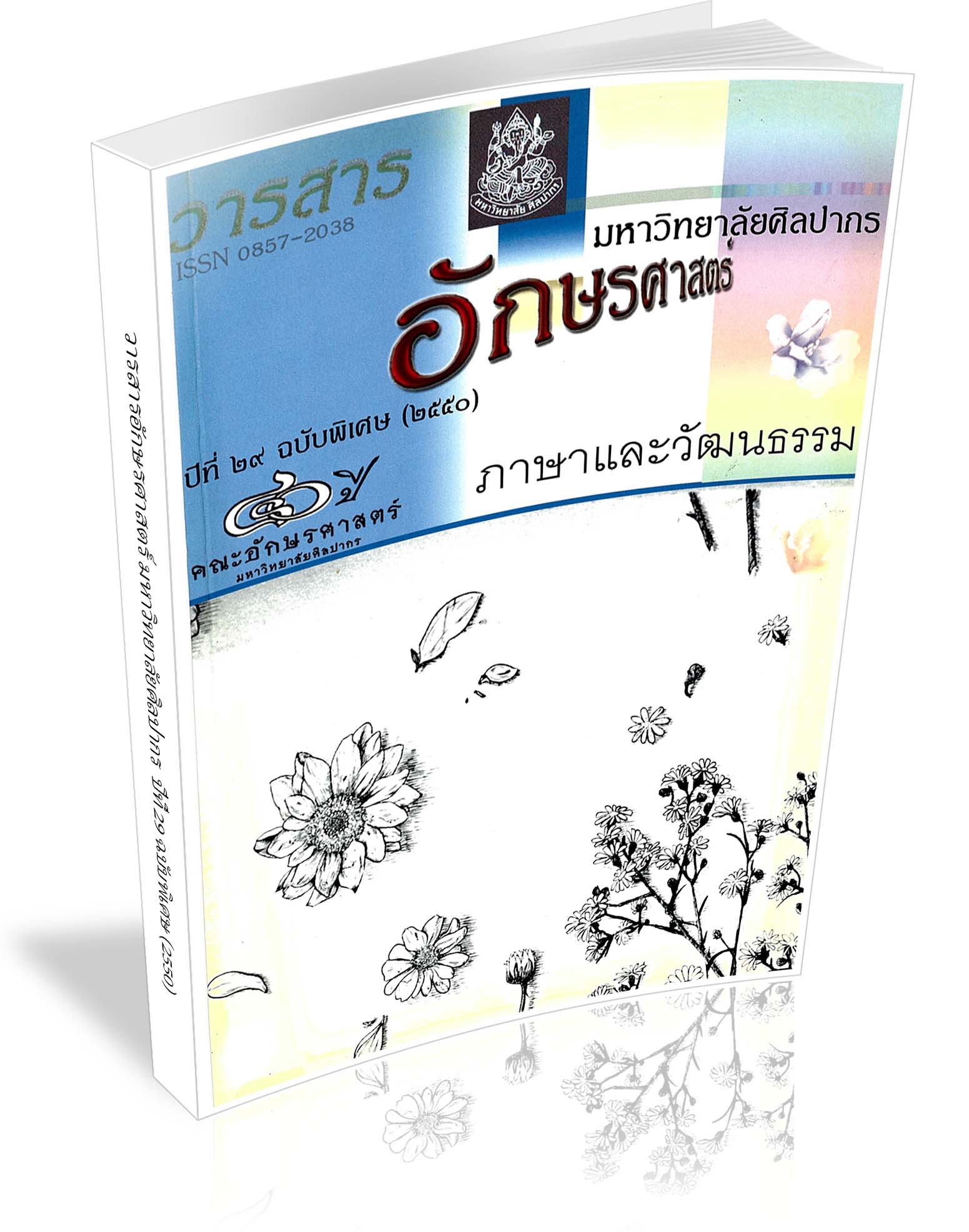English To Thai Loan Translation : Types, Linguistic and Sociolinguistic Factors
Keywords:
การแปลคำยืม, ภาษาศาสตร์, การแปลภาษาอังกฤษAbstract
This research studies the English to Thai loan word translation linguistic formats and the sociolinguistic explanations behind the usage of loan translation techniques. The data are from 30 English-Thai translation texts and the interview with translators. The results are the nine patterns of the loan translation: proper names, loan words without modification, loan words with classifiers, loan words along with generic terms modified as to form, loan words along with generic terms modified as to function, loan words along with their translation, loan words along with footnotes, loan words as taken words, and loan expressions. The sociolinguistic factors behind the usage of loan translation are the technicality of the terms, the identification of the profession groups, the exclusion of the non-group members, the popularity of English in Thai language, and the globalization trends in some particular businesses. Recommendations for the language planner and translators are provided.
Downloads
References
Kessara, S. (2005). An Analysis of the Translation of Ghost Story. A research paper for LA 900 submitted in portal fulfillment of the requirements for the degree of Master of Arts in Language and Communication, School of Language and Communication the national institute of Development Administration.
Larson, M. (1998). Meaning-Based Translation : A Guide to Cross-Language Equivalence. Oxford: University Press of America.
Downloads
Published
How to Cite
Issue
Section
License
ผู้เขียนบทความต้องยินยอมในข้อกำหนดต่าง ๆ ของวารสารก่อนส่งบทความตีพิมพ์




